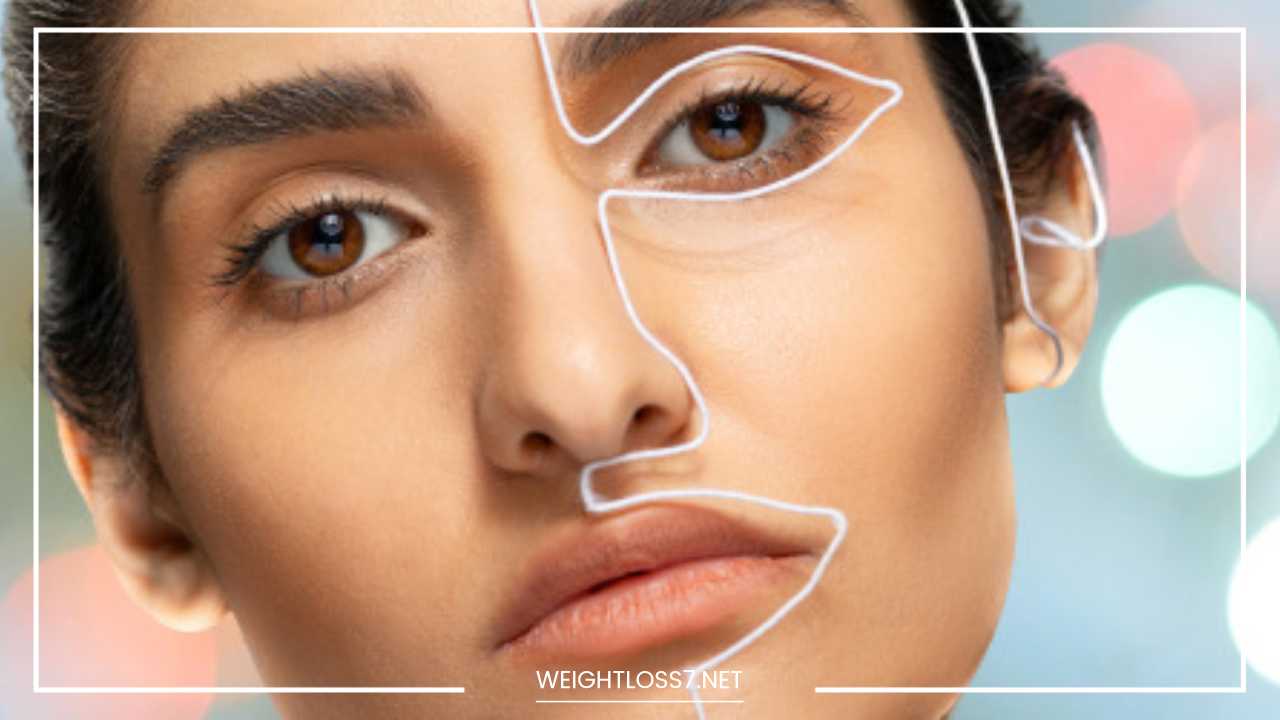Facelift: Restore Your Youthful Look and Boost Confidence

Facelift
Facelift: Unveiling the Facts Behind This Popular Cosmetic Procedure
The face is a roadmap of our lives. It tells a story of laughter lines, crow’s feet, and the occasional sun spot. While these signs of aging can be beautiful markers of a life well-lived, some people choose to address them through cosmetic surgery.
Among these procedures, the facelift remains one of the most popular options for those seeking a rejuvenated appearance.
But before diving into the world of facelifts, let’s navigate the key questions: What exactly is a facelift? Is it right for you? What are the risks and recovery involved?
This comprehensive guide will unveil the facts behind this popular cosmetic procedure, empowering you to make informed decisions about your journey towards a more youthful visage.
Understanding the Facelift: Lifting the Veil on Benefits
A facelift, also known as rhytidectomy, is a surgical procedure designed to address the visible signs of aging on the lower face and neck.
It targets sagging skin, deep wrinkles, and jowls, aiming to create a smoother, more youthful contour. Here’s a breakdown of what a facelift can address:
- Loose skin: Over time, skin loses elasticity, leading to laxity and drooping. A facelift removes this excess skin, tightening the remaining tissue.
- Deep wrinkles and folds: The lines around the nose and mouth, as well as the creases along the jawline, can become more pronounced with age. A facelift can smooth these wrinkles by tightening underlying muscles and tissues.
- Loss of facial definition: As we age, the jawline can become less defined and the cheeks may lose volume. Facelifts can help restore this definition, creating a sharper, more sculpted appearance.
- Jowls: The sagging of skin and fat in the lower jaw area creates jowls. Facelifts address this by repositioning the underlying tissues and sculpting the jawline.
Who is a Candidate for a Facelift?
While facelifts can be transformative, they aren’t a one-size-fits-all solution. Here’s who might find this procedure beneficial:
- Individuals with good overall health: Being in good physical condition is crucial for undergoing surgery and promoting optimal healing.
- Realistic expectations: Facelifts aim to improve, not erase, signs of aging. Setting realistic expectations about the outcome is key.
- Non-smokers: Smoking can significantly impede wound healing and increase surgical risks. Quitting smoking well in advance is crucial.
- Visible signs of aging: If loose skin, deep wrinkles, and jowls are causing you concern, a facelift might be a good option.
Types of Facelifts: Choosing the Right Approach
There isn’t just one type of facelift. The specific procedure chosen depends on your individual needs and facial anatomy. Here’s a look at some common options:
- Traditional facelift: This addresses the lower face and jowls, tightening the skin and repositioning tissues.
- Mini facelift: This is a less invasive option focusing on the lower face and jowls, ideal for those with minimal signs of aging.
- Mid-facelift: This targets the cheeks and the area around the nose and mouth, addressing volume loss and sagging.
- Neck lift: This procedure specifically addresses loose skin and wrinkles on the neck.
- Combined facelift: This combines elements of different types of facelifts to address various concerns on the face and neck.
During your consultation, your plastic surgeon will discuss the best option for you based on your desired outcome and facial structure.
The Facelift Procedure: A Step-by-Step Guide
Knowing what to expect during a facelift can help alleviate any anxiety. Here’s a general overview of the procedure:
- Pre-operative consultation: This is a crucial step where you discuss your goals, medical history, and any medications you’re taking. The surgeon will examine your face and advise on the most suitable procedure.
- Anesthesia: Facelifts are typically performed under general anesthesia, ensuring you’re comfortably asleep throughout the surgery.
- The procedure itself: The specific steps depend on the chosen facelift type. Generally, incisions are made around the temples, hairline, and ears. Skin is then lifted, underlying tissues are tightened, and excess skin is removed. The surgeon then meticulously closes the incisions.
- Recovery: Expect swelling, bruising, and discomfort following your facelift. You’ll need to wear a compression garment to support your face and promote healing. Most patients require a week or two of downtime before gradually resuming normal activities.
The Road to Recovery: Navigating Post-Operative Care
Recovery from a facelift is an important part of achieving the best possible results. Here’s what you can expect:
- Pain management: Your doctor will prescribe medication to manage any discomfort following surgery.
- Swelling and bruising: These are common side effects that gradually subside within a few weeks. Cold compresses can help reduce swelling.
- Drainage: You may experience some drainage from the incisions. Your doctor will provide instructions on how to care for the area.
- Dietary restrictions: You might need to follow a soft diet initially to promote healing.
- Limited activity: Avoid strenuous activity for several weeks to allow your body to heal.
- Follow-up appointments: Regular checkups with your surgeon are crucial to monitor healing and ensure proper recovery.
The Risks and Complications of Facelifts
As with any surgery, facelifts carry inherent risks. It’s important to be aware of these potential complications before making a decision:
- Bleeding and infection: These are rare but possible risks associated with any surgery.
- Nerve damage: This can lead to temporary or permanent numbness in certain areas of the face.
- Scarring: While most scars are well-hidden, there’s a chance of noticeable scarring.
- Hair loss: Temporary hair loss can occur around the incision sites.
- Asymmetry: While rare, facial asymmetry can occur. Choosing a qualified and experienced surgeon can minimize this risk.
The Cost of a Facelift: Investing in Your Appearance
The cost of a facelift can vary depending on several factors, including:
- Surgeon’s experience and qualifications
- Geographic location
- Type of facelift performed
- Anesthesia fees
- Facility fees
Generally, the cost of a facelift can range from $7,000 to $30,000 or more. It’s important to consult with multiple board-certified plastic surgeons to understand their pricing structure and ensure you’re receiving fair value.
Alternatives to Facelifts: Exploring Non-Surgical Options
Facelifts aren’t the only option for those seeking facial rejuvenation. Here are some non-surgical alternatives to consider:
- Botox injections: These relax muscles that cause wrinkles, smoothing out fine lines and crows’ feet.
- Dermal fillers: These plump up sunken areas of the face, restoring volume and reducing wrinkles.
- Laser skin resurfacing: This treatment uses lasers to remove damaged outer layers of skin, revealing smoother, younger-looking skin.
- Microneedling: This minimally invasive procedure creates tiny punctures in the skin, stimulating collagen production and promoting a firmer appearance.
While non-surgical options can provide noticeable results, they are often temporary and require ongoing treatments.
The Long-Term Results of a Facelift: Maintaining Your Youthful Look
The results of a facelift can last for 10 to 15 years or even longer, depending on various factors such as genetics, sun exposure, and lifestyle habits. Here are some tips for maintaining your youthful look after a facelift:
- Sun protection: Sun exposure accelerates skin aging. Apply sunscreen daily with SPF 30 or higher, and wear protective hats when outdoors.
- Healthy lifestyle: Maintaining a balanced diet, exercising regularly, and getting enough sleep all contribute to healthy, youthful-looking skin.
- Skincare routine: A consistent skincare routine that includes cleansing, moisturizing, and using anti-aging products can help maintain your results.
- Consider complementary treatments: Botox injections or fillers can be used in conjunction with a facelift to address specific concerns and enhance the overall outcome.
Making the Decision: Is a Facelift Right for You?
Ultimately, the decision to undergo a facelift is a personal one. Here are some key questions to ask yourself:
- Am I bothered by the signs of aging on my face?
- Do I have realistic expectations about the outcome?
- Am I in good overall health?
- Can I afford the surgery and downtime for recovery?
If you answer yes to these questions, then a facelift might be a viable option for you. Consulting with a board-certified plastic surgeon is crucial for discussing your goals, understanding the risks and benefits, and determining if a facelift is the right approach for you.
Finding the Right Surgeon: A Key to Successful Results
Choosing a qualified and experienced plastic surgeon is paramount for a safe and successful facelift. Here are some tips for finding the right surgeon:
- Board certification: Ensure the surgeon is board-certified by the American Board of Plastic Surgery (ABPS).
- Experience: Look for a surgeon who specializes in facial rejuvenation and has extensive experience performing facelifts, particularly the specific type you’re considering.
- Before-and-after photos: Review the surgeon’s portfolio to see examples of their work and get a sense of their aesthetic style.
- Patient reviews: Read online reviews and testimonials from past patients to gain insights into their experiences.
- Consultation: Schedule consultations with multiple surgeons. This allows you to ask questions, discuss your expectations, and get a sense of their bedside manner.
Beyond the Physical: The Emotional Impact of Facelifts
While the focus of this guide has been on the physical aspects of facelifts, it’s important to acknowledge the potential emotional impact. Here are some things to consider:
- Body image: Facelifts can boost self-confidence and improve one’s perception of their appearance. However, it’s important to remember that true beauty comes from within.
- Psychological expectations: Don’t expect a facelift to magically solve all your life’s problems. It’s a cosmetic procedure, not a cure-all for unhappiness.
- Open communication: Discuss your emotional motivations for considering a facelift with your doctor or a therapist. They can help you explore your expectations and ensure you’re making the decision for the right reasons.
Final Word: Unveiling a New You, But Staying True to Yourself
Facelifts can be a powerful tool for facial rejuvenation, offering a renewed sense of confidence and a more youthful appearance. However, it’s crucial to approach this procedure with realistic expectations and a holistic understanding of its impact.
By carefully considering the risks and benefits, choosing a qualified surgeon, and prioritizing your mental well-being, you can embark on a journey of self-improvement that enhances your outer beauty while staying true to your inner essence.
Remember, a facelift is just one piece of the puzzle. By adopting a healthy lifestyle, maintaining a positive outlook, and embracing your authentic self, you can radiate beauty and confidence at any age.

















